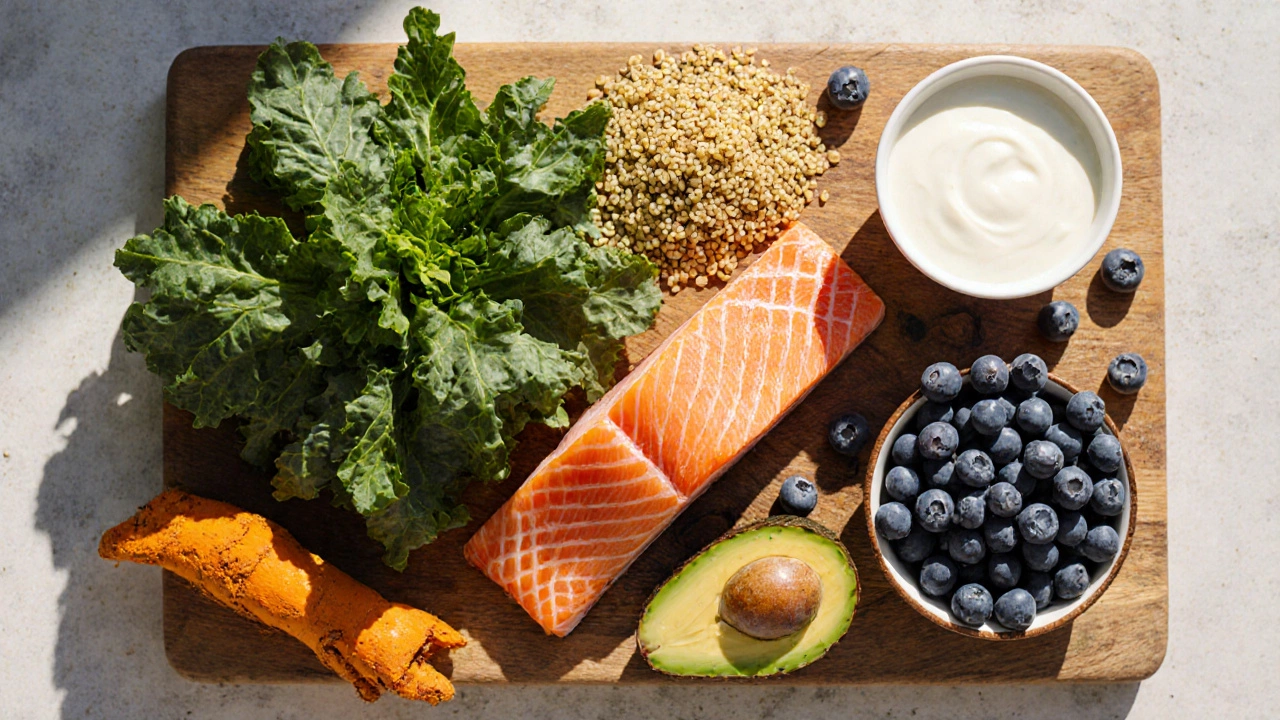Discover the world’s healthiest foods, why they rank top in nutrition, and how to add them to your diet, especially when traveling for medical tourism.
Read MoreNutrition Made Simple: Practical Tips for Everyday Health
Ever wonder why some diet plans work for a few weeks and then fall apart? The secret is less about fancy diets and more about everyday habits that match your body’s needs. On this page you’ll find straight‑forward advice on balanced meals, smart supplements, and even a dash of Ayurveda to keep you feeling good without the hype.
Balanced Diet Basics You Can Use Right Now
Start by filling half your plate with colorful vegetables. Greens, carrots, bell peppers and beans give you fiber, vitamins, and minerals while keeping calories low. The other quarter should be lean protein – think chicken, fish, lentils or tofu. Protein helps repair muscles and controls hunger. Save the final quarter for whole‑grain carbs such as brown rice, quinoa or whole‑wheat roti. These carbs release energy slowly, so you stay satisfied longer.
If you’re over 50, a few tweaks can make a big difference. Women in their mid‑life benefit from calcium‑rich foods like low‑fat dairy, sesame seeds or fortified soy milk to support bone health. Adding a source of healthy fat – olive oil, avocado or a handful of nuts – helps absorb fat‑soluble vitamins and keeps joint pain at bay.
One of our popular posts, “Best Diet Plan for 55‑Year‑Old Women to Lose Weight,” dives deeper into meal timing, portion control and easy swaps you can start today. It shows how simple changes, like swapping sugary drinks for infused water, cut extra calories without feeling deprived.
Supplements & Ayurvedic Nutrition You Can Trust
Supplements can fill gaps, but they’re not magic pills. The most common categories are vitamins, minerals, protein powders and herbal extracts. Before you grab a bottle, ask yourself: Do I lack this nutrient in food? Do I have a specific health goal? For most people, a daily multivitamin with iron (if you’re prone to anemia) and vitamin D (especially in winter) is enough.Ayurveda offers a different perspective by balancing the three doshas – Vata, Pitta and Kapha. If you tend to feel “dry” or “cold,” you’re likely a Vata type. Warm soups, cooked veggies, ghee and spices like ginger help calm Vata. Pitta types, who get hot and irritable easily, benefit from cooling foods such as cucumber, coconut water and cilantro. Kapha individuals, who feel sluggish, do well with light, bitter greens, peppery spices and moderate portions of dairy.
Our article “Ayurveda Inflammatory Foods: What to Avoid (and What to Eat Instead)” lists dosha‑specific foods to skip and swaps that keep inflammation low. It’s a handy cheat‑sheet if you want to blend modern nutrition with ancient wisdom.
When choosing a supplement, check for third‑party testing, clear dosage instructions and any potential interactions with medications. If you’re on a prescription for diabetes or heart health, talk to your doctor before adding anything new.
Putting it all together doesn’t have to be overwhelming. Pick one change each week – maybe add a veggie side to dinner, try a daily multivitamin, or swap a spicy snack for a soothing herbal tea. Small steps add up, and before you know it you’ll notice steadier energy, better digestion and a calmer mind.
Ready to start? Browse our tag page for more articles on nutrition, weight loss, supplements and Ayurvedic eating. Each piece gives you actionable tips you can try right away, no jargon, no fluff – just real‑world advice for a healthier you.
Discover which country tops the list for the unhealthiest diet, shocking global eating habits, and useful tips for smarter food choices.
Read MoreThe 40 30 30 rule for weight loss breaks down your calorie intake into an effective ratio to balance nutrition and promote fat loss. It involves consuming 40% of your calories from carbohydrates, 30% from proteins, and 30% from fats. This approach can help you maintain stable energy levels, support muscle growth, and avoid the pitfalls of extreme dieting. Discover how this simple and practical plan can be easily integrated into your lifestyle to achieve lasting results.
Read More






